Young genes have distinct gene structure, epigenetic profiles, and transcriptional regulation
- PMID: 30232198
- PMCID: PMC6211652
- DOI: 10.1101/gr.234872.118
Young genes have distinct gene structure, epigenetic profiles, and transcriptional regulation
Abstract
Species-specific, new, or "orphan" genes account for 10%-30% of eukaryotic genomes. Although initially considered to have limited function, an increasing number of orphan genes have been shown to provide important phenotypic innovation. How new genes acquire regulatory sequences for proper temporal and spatial expression is unknown. Orphan gene regulation may rely in part on origination in open chromatin adjacent to preexisting promoters, although this has not yet been assessed by genome-wide analysis of chromatin states. Here, we combine taxon-rich nematode phylogenies with Iso-Seq, RNA-seq, ChIP-seq, and ATAC-seq to identify the gene structure and epigenetic signature of orphan genes in the satellite model nematode Pristionchus pacificus Consistent with previous findings, we find young genes are shorter, contain fewer exons, and are on average less strongly expressed than older genes. However, the subset of orphan genes that are expressed exhibit distinct chromatin states from similarly expressed conserved genes. Orphan gene transcription is determined by a lack of repressive histone modifications, confirming long-held hypotheses that open chromatin is important for new gene formation. Yet orphan gene start sites more closely resemble enhancers defined by H3K4me1, H3K27ac, and ATAC-seq peaks, in contrast to conserved genes that exhibit traditional promoters defined by H3K4me3 and H3K27ac. Although the majority of orphan genes are located on chromosome arms that contain high recombination rates and repressive histone marks, strongly expressed orphan genes are more randomly distributed. Our results support a model of new gene origination by rare integration into open chromatin near enhancers.
© 2018 Werner et al.; Published by Cold Spring Harbor Laboratory Press.
Figures
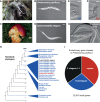
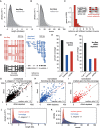
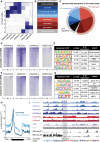
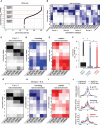
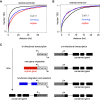

Similar articles
-
Differential open chromatin profile and transcriptomic signature define depot-specific human subcutaneous preadipocytes: primary outcomes.Clin Epigenetics. 2018 Nov 26;10(1):148. doi: 10.1186/s13148-018-0582-0. Clin Epigenetics. 2018. PMID: 30477572 Free PMC article. Clinical Trial.
-
Modeling cis-regulation with a compendium of genome-wide histone H3K27ac profiles.Genome Res. 2016 Oct;26(10):1417-1429. doi: 10.1101/gr.201574.115. Epub 2016 Jul 27. Genome Res. 2016. PMID: 27466232 Free PMC article.
-
Histone modifications underlie monocyte dysregulation in patients with systemic sclerosis, underlining the treatment potential of epigenetic targeting.Ann Rheum Dis. 2019 Apr;78(4):529-538. doi: 10.1136/annrheumdis-2018-214295. Epub 2019 Feb 6. Ann Rheum Dis. 2019. PMID: 30793699
-
Developmental systems of plasticity and trans-generational epigenetic inheritance in nematodes.Curr Opin Genet Dev. 2017 Aug;45:51-57. doi: 10.1016/j.gde.2017.03.001. Epub 2017 Mar 24. Curr Opin Genet Dev. 2017. PMID: 28343090 Review.
-
Regulation of tRNA gene transcription by the chromatin structure and nucleosome dynamics.Biochim Biophys Acta Gene Regul Mech. 2018 Apr;1861(4):295-309. doi: 10.1016/j.bbagrm.2017.11.008. Epub 2017 Dec 5. Biochim Biophys Acta Gene Regul Mech. 2018. PMID: 29313808 Review.
Cited by
-
Spatial Transcriptomics of Nematodes Identifies Sperm Cells as a Source of Genomic Novelty and Rapid Evolution.Mol Biol Evol. 2021 Jan 4;38(1):229-243. doi: 10.1093/molbev/msaa207. Mol Biol Evol. 2021. PMID: 32785688 Free PMC article.
-
De novo gene birth.PLoS Genet. 2019 May 23;15(5):e1008160. doi: 10.1371/journal.pgen.1008160. eCollection 2019 May. PLoS Genet. 2019. PMID: 31120894 Free PMC article. No abstract available.
-
Characterization of the Pristionchus pacificus "epigenetic toolkit" reveals the evolutionary loss of the histone methyltransferase complex PRC2.Genetics. 2024 May 7;227(1):iyae041. doi: 10.1093/genetics/iyae041. Genetics. 2024. PMID: 38513719 Free PMC article.
-
Analysis of meiosis in Pristionchus pacificus reveals plasticity in homolog pairing and synapsis in the nematode lineage.Elife. 2021 Aug 24;10:e70990. doi: 10.7554/eLife.70990. Elife. 2021. PMID: 34427184 Free PMC article.
-
Subcellular Enrichment Patterns of New Genes in Drosophila Evolution.Mol Biol Evol. 2025 Feb 3;42(2):msaf038. doi: 10.1093/molbev/msaf038. Mol Biol Evol. 2025. PMID: 39920336 Free PMC article.
References
-
- Andersson R, Sandelin A, Danko CG. 2015. A unified architecture of transcriptional regulatory elements. Trends Genet 31: 426–433. - PubMed
Publication types
MeSH terms
Substances
LinkOut - more resources
Full Text Sources
Other Literature Sources
